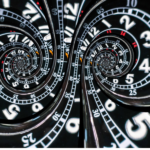The Music of Halacha: Omer: Holy Sweat!
Much of Pesach centers on food. We do not eat Chametz. We eat Matzah and Maror. The Seder focuses on what we eat. There must be a deeper connection with the Omer offering of the second day of Pesach. This offering was the beginning of a fifty-day process. It began with the Omer, which allowed us to use the newest crops for Temple offerings. It culminated on Shavuot with the offering of Two Loaves of Bread, that’s right, Chametz, which triggered permission for us to eat Chadash – from the New Crops – even outside the Beit Hamikdash. What are the extra lessons about food that we can derive from the Mitzvah of Omer?
“They reaped the Omer, put it into the baskets, and brought it to the Temple Court. They used to parch it with fire to fulfill the ordinance that it should be “Parched with Fire”. So said Rabbi Meir. But the Sages say, they used to beat it with reeds and the stems of plants that the grains should not be crushed; then they put it into a hollow tube wherein were holes so that the fire may prevail over it. They spread it out in the Temple Court so that the wind blew over it. They put it in a gristmill and then took a Tenth of an Ephah of flour, which was then sifted through thirteen sieves.” (Menachot 66a)
Why would they perform all these tasks within the Temple Court? Another Mishna (Menachot 95b) teaches that the kneading and arrangement of the Show Bread was done outside the Court, and only the baking was done within. The Talmud explains that anything that doesn’t demand sanctified Temple vessels is done outside the Court. Why would they beat, parch, grind and sift the Omer in the Court?
It seems that Maimonides believed this law to be derived from a verse. (Kiryat Sefer, Hilchot Timidim U’Mussafim, Chapter 7) However, we must ask what this law is teaching us.
The Sages of the Midrash (Vayikra Rabbah 28:1-3) understand the Omer, brought on the second day of Pesach, to have two qualities. It reminds us of the Manna which fell in the measure of an Omer for each person. It also reminds us of how, although we understand how much we must work in order to eat and live, we all too easily forget, how much God provides for us to have food, water and clothing. In fact, the Midrash understands that we can use the work we must do with the Omer offering as a Tikkun – Fixing – of “You shall eat bread by the sweat of your brow.” We perform all this work, the parching, beating, grinding and sifting to use the “sweat of our brows” to provide food for God’s home rather than ourselves. It is our acknowledgement of how much we benefit from God’s abundance, and how easily we forget, because of our work and involvement, that we benefit so much from God’s blessings.
The work preparing the Omer transforms our regular food into Manna. All the steps of our daily work are sanctified by our intention to transform our daily food into Manna. We specifically do not use sanctified Temple vessels, because our intention is to sanctify “the sweat of our brows”. The work is a reminder that even our mundane efforts can be holy.
Pesach and its foods are holy. However. To prepare for the Revelation at the end of the fifty-day period, we must understand that our challenge is to transform all we eat into Manna as our acknowledgement of how much we benefit from God’s abundant blessings. The challenge of the Omer period is to discover the holy in the “sweat of our brows”.



